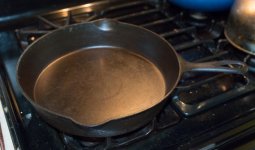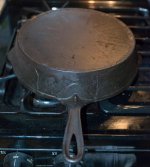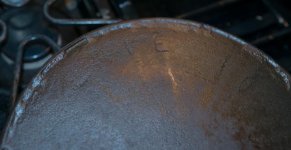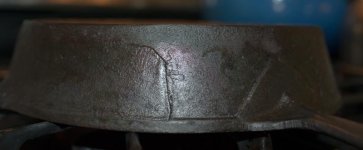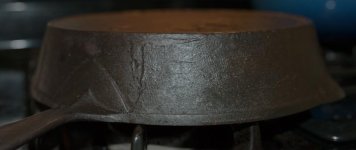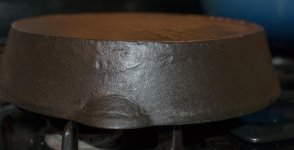My wife apparently found this 20 years ago at a flea market right before we moved. It got boxed up with some Wagners 1891, that we didn't like, when we moved and we never really looked at since. I had the idea to machine the Wagners and see if I could make them decent. I was surprised to find the piece my wife bought, though she remembered buying it.
I put it all in the oven on the self clean cycle and burned all the pealing seasoning off. I was surprised to see a very faint Erie stamp that was hidden before. I seasoned it and found the skillet cooked really well. So much nicer than the newer cast iron I had set out to save ever did (but I haven't machined it smooth yet). So I set out to find out about this Erie brand and was surprised to find it's collectible.
However my skillet doesn't really look like most of the Erie pieces I see pictured here. It looks more primitive in some ways. I'm not sure if it's an early piece, a replica cast from an existing piece, or some other story. Any ideas?
I put it all in the oven on the self clean cycle and burned all the pealing seasoning off. I was surprised to see a very faint Erie stamp that was hidden before. I seasoned it and found the skillet cooked really well. So much nicer than the newer cast iron I had set out to save ever did (but I haven't machined it smooth yet). So I set out to find out about this Erie brand and was surprised to find it's collectible.
However my skillet doesn't really look like most of the Erie pieces I see pictured here. It looks more primitive in some ways. I'm not sure if it's an early piece, a replica cast from an existing piece, or some other story. Any ideas?

